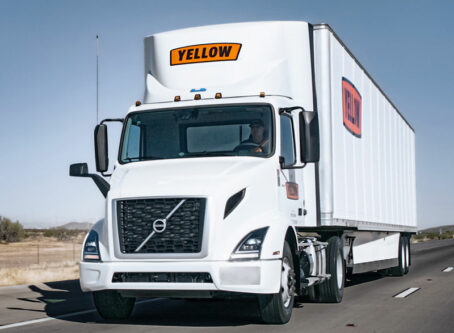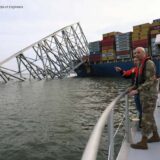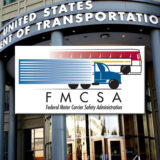Failing the grade
In the majority of crashes involving trucks and trains, the trucker is cited for some sort of wrongdoing such as disobeying signs or reckless driving.
“Blame the trucker” is a common mantra among media, law enforcement and the general public when discussing such crashes.
Truckers, their families, and the companies they work for who seek recourse or just try to defend themselves against damage claims face a stacked deck in the aftermath of a truck-train collision. And because there’s virtually no such thing as a “minor” truck-train crash, the incidents almost always make the news. In many cases, the version given by railroad officials and law enforcement is the only side that gets reported.
In the past, a stacked deck against a trucker and trucking company in court meant rolling over and playing dead. But with knowledge of regs and guidelines that can be used for recourse, that no longer needs to be the case.
“Under the present protocol the railroads have convinced everyone that the driver is at fault for these accidents,” says Larry Henley, a former railroad trainmaster turned independent crash investigator.
One of Henley’s specialties is the crossing grade, the relationship of distance and elevation of the pavement and tracks at a crossing. There’s probably not a trucker out there who hasn’t seen a “humped” crossing or one that is built up enough to high-center a vehicle with low clearance.
Henley says an alarming number of the 136,000 crossings in the U.S. do not conform to the maximum elevation allowed in regulations and federal guidance.
“You measure out 30 feet from the nearest rail, and the elevation at that point cannot be more than 3 inches above or 3 inches below the elevation of the rail,” he said. “This is 30 feet out …
“Following this guideline, most railroad crossings would be suitable for the safe passage of just about any form of motorist including lowboy trailers.”
In an ideal world, trucks would not get hung up on tracks, but the fact is, it happens and is not uncommon. Holding everyone accountable who possesses responsibility is another matter entirely.
A recent high-profile crash involving a lowboy trailer and an Amtrak train is a case in point. While no one died in that Feb. 1 crash in Leoni, MI, 10 people were injured, including the truck driver. And damage claims have totaled $2.3 million. Of that amount, the railroad has claimed $2.2 million in damages to its equipment.
In that case, law enforcement officials said the truck was “hung up” on the tracks, but the railroad officials allege the driver was stopped on the tracks by his own decision.
Perhaps the railroad’s shift of blame to the trucker has to do with the fact that the crossing does not meet federal specifications, nor was it properly marked for low ground clearance.
Henley says railroads, municipalities, departments of transportation and the like must conform to the standards set by the American Railway Engineering and Maintenance-of-Way Association and other guidelines.
Often, a humped crossing is the result of a tie replacement project or upgrade by the railroad.
“Every time they put in new ties it raises the elevation of the right of way anywhere from 5 to 6 inches,” Henley says. “What nobody has noticed is, over the years when the railroad rights of way go up in elevation, correspondingly so does the grade crossing. And they simply do not comply with the guidelines established in AREMA.”
Henley says railroads would rather close crossings – there were more than 200,000 crossings a decade ago – than admit they bear responsibility for trucks and other vehicles getting hung up.
He says the seven major railroads have a goal to close 400 crossings each to road traffic each year, for a total of 2,800 crossings. Henley says they’ve been on pace the past few years.
Guidelines set forth in AREMA aren’t the only guidelines being ignored or cast aside.
There’s also an issue of signage.
According to a Federal Highway Administration guideline known as the MUTCD, or the Manual on Uniform Traffic Control Devices, any nonconforming crossing is supposed to be marked with a low-ground clearance sign.
State DOTs, municipal and county crews and others in charge of a roadway at a grade crossing are bound to follow the MUTCD.
“The MUTCD is the law governing all traffic control devices. Non-compliance of the MUTCD ultimately can result in loss of federal-aid funds as well as significant increase in tort liability,” a 2009 posting in the Federal Register states. The feds have since issued a notice of proposed rulemaking to say updates to the document will soon be on their way to states to adopt.
While investigating the Leoni, MI, crash, Henley says the intersection did not conform to AREMA and the proper sign was not installed as per the MUTCD.
“In other words, they’re supposed to give a warning out here to the trucker that if you’re pulling a trailer with low ground clearance, you might not be able to make it over this crossing,” he said.
Henley takes the documents seriously, but says others do not – including the railroads, law enforcement and those with jurisdiction over the roadway at a crossing.
The MUTCD states:
“If the highway profile conditions are sufficiently abrupt to create a hang-up situation for long wheelbase vehicles or for trailers with low ground clearance, the Low Ground Clearance Highway-Rail Grade Crossing (W10-5) sign should be installed in advance of the highway-rail grade crossing.”
The document also states that the railroads are supposed to communicate with local jurisdictions to make sure intersections are properly marked. This includes ground clearance.
Chuck Johnston, supervisor for OOIDA’s Claims Department, told Land Line he used to haul lowboy trailers.
“When I came to a hump crossing or a curb or something, I knew what I could cross and what I couldn’t. Our insured members should be doing that, too, but they don’t always,” Johnston says.
“The bigger responsibility is for the railroad to make sure these are safe or at least there are effective warnings out there that truckers should heed.”
Johnston received a claim from a hang-up crash that occurred in Waveland, MS, due to low ground clearance.
While investigating that crash, Henley says the intersection used to be marked with low-ground clearance signs, but that those signs had been washed away during Hurricane Katrina and were never replaced.
Henley has been helpful in guiding truckers, carriers and their insurers to the regs in an effort to give them a fair shake.
“I always knew there had to be regulations, but we could never find them,” says Johnston. “Larry was the first person I met who was with a railroad who was not completely railroad-biased. He was the first to tell us about AREMA and the MUTCD regulations.”
For a trucker, it helps to have the documentation about crash history at a crossing, proof of signage or lack of signage, and knowledge about the elevation of the roadway in relation to the tracks.
“If you’re involved in one of those situations, get with us and see what we can do to help,” Johnston said. “We can provide information that you can use to defend yourself.”
While each situation is unique, and crashes are preventable, there’s not always a way to avoid a road containing an unmarked, non-conforming railway intersection. Even a GPS can lead a trucker down the path to an unintended consequence. Henley says it’s quite possible the trucker in the Leoni crash had relied on GPS, which did not show the road as being off-limits.
Even with facts, it’s still difficult to get a fair, unbiased report about a truck-train crash. Johnston says that is partly due to the fact that training for law enforcement investigators comes directly from the Federal Railway Administration acting in conjunction with the major railroads.
“The police departments only know what the railroads tell them,” Johnston says. “The trucker shouldn’t be crossing that track, so they write a ticket for failure to yield and the guy gets a ticket. They get a biased report from the railroads and then the railroads go after the trucker and sue them for everything they can.”
Henley has no plans to slow down in his quest to make the proper resources available to truckers and insurers who may not otherwise know they exist.
“The information has always been there. You just have to know where to go look,” he said. LL









